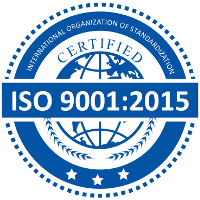Dear respected authors,
If you can't find our response by email, please check your spam box as well.
Open Access Journals
-
 IMPACT
IMPACT
FACTOR
7.1 -
 IMPACT
IMPACT
FACTOR
5.8 -
 IMPACT
IMPACT
FACTOR
4.9 -
 IMPACT
IMPACT
FACTOR
4.08 -
 IMPACT
IMPACT
FACTOR
4.75 -
 IMPACT
IMPACT
FACTOR
6.83 -
 IMPACT
IMPACT
FACTOR
6.8 -
 IMPACT
IMPACT
FACTOR
7.0 -
 IMPACT
IMPACT
FACTOR
6.1 -
 IMPACT
IMPACT
FACTOR
5.5 -
 IMPACT
IMPACT
FACTOR
6.0 -
 IMPACT
IMPACT
FACTOR
4.8 -
 IMPACT
IMPACT
FACTOR
6.6 -
 IMPACT
IMPACT
FACTOR
5.4 -
 IMPACT
IMPACT
FACTOR
5.72 -
 IMPACT
IMPACT
FACTOR
4.5 -
 IMPACT
IMPACT
FACTOR
6.2
Highly Accessed
-
 Journal of Accounting, Marketing and Finance Marketing (JAMFM)
Journal of Accounting, Marketing and Finance Marketing (JAMFM)
Boosting The Economy. -
 American Journal of Agriculture, Horticulture and Soil Science (AJAHS)
American Journal of Agriculture, Horticulture and Soil Science (AJAHS)
Protecting the Future. -
 Journal of Chemicel Engineering and Applied Chemistry (JCEAC)
Journal of Chemicel Engineering and Applied Chemistry (JCEAC)
History of Engineering Research In Chemicals -
 Journal of Electrical Engineering and Computer Science (JEECS)
Journal of Electrical Engineering and Computer Science (JEECS)
Mechanism at its best. -
 American Journal of Mathematics and Physics Application (AJMPA)
American Journal of Mathematics and Physics Application (AJMPA)
Everything in life has a pattern of Mathematics and impact of Physics. -
 American Journal of Medical and Pharmacy Research (AJMPR)
American Journal of Medical and Pharmacy Research (AJMPR)
Where Life Begins.
Open Access and Peer Review Journals
SDIP Press is a peer review, Open Access Scientific research publication journal that publishes 17 Diverse Categories of Journals. SDIP Press has more than 300 Academic reviewer from all over the world. Our journals have a very low application process charge and fast publication record. The journals are listed below : Lizi Jiaohuan Yu Xifu/Ion Exchange and Adsorption Fa yi xue za zhi
A-Z Categories
Latest Articles
Detoxification effect of Bifidobacterium bifidum against aflatoxin M1 in weaning baby food
Paper ID: AJFSN-17-05-2020-174
Abstract : Aflatoxin M1 (AFM1) concerns potent hazard in baby food for infant and young children. Bacterial detoxification is a promising method to reduce mycotoxins in food matrix. Bifidobacterium bifidum investigate the binding capacity towards AFM1 in phosphate buffered saline (PBS) and prepared baby food. The binding ability was evaluated regarding to bacterial population (107, 108 and 109 cfu/g), incubation intervals (0, 6, 12 and 24 hrs), viable and heat treated cells against AFM1. The unbound AFM1 was quantitative analyzed by Competitive Direct ELISA method. The experimental use of several concentrations of B. bifidum showed gradual AFM1 decrease forming binding AFM1-bacteria complex by incubation time. The AFM1 reduction percent/24hrs of B. bifidum cells ranged from 34.15 to 56.66% in PBS and from 35.77 to 64.10% in baby food samples. High bacterial concentration, nonviable bacteria and increase storage intervals are factors had significant (p<0.05) AFM1-bacteria binding ability to reduce AFM1 in spiked baby food samples contained 1x109 cfu/g of nonviable bacterial cells to be 17.72±0.68 ng/kg. The high bacterial concentration of nonviable cells show significant high detoxification effect in spiked samples, when compared with PBS (p<0.05) and may comply with the acceptable limits in the Egyptian standards. It could be concluded that, the bacterial population, heat-treated cells and time of incubation have a positive binding effect toward AFM1 in baby food.
Full article
Full article
A Corrosion Model for Prediction of the Service Life of Reinforced Concrete Water Conveyancing Structures.
Paper ID: BJCAE-14-05-2020-173
Abstract : With increased competing demands of sustainable and green structures to support the United Nations sustainable development goals, new technologies are evolving for efficient design and manufacture and construction of civil and environmental engineering products. Researchers have up scaled their effort to develop techniques to monitor the performance of civil engineering structures within their service life for optimum return from investment. The aim of this research was to develop a corrosion model for prediction of the service life of reinforced concrete water conveyancing structures. To achieve the desired objective, steel samples were cast in 9 cylinders each of 150mm diameter x 300mm long, 130mm diameter x 300mm long and 100mm diameter x 300mm long in concrete of characteristic strength 25/mm2,30N/mm2 and 35N/mm2 respectively. After 24 hours the cast specimens were demolded and immersed in curing tanks for 28 days and then immersed in a 3.5% industrial sodium chloride solution under 6V. The accelerated corrosion specimens were monitored for onset of cracks and stopped when the cracks were 0.2mm in width. The physical and chemical properties of the materials were investigated for compliance with relevant and applicable British and Kenyan standards for conformity to acceptable criteria. The concrete materials were batched by weight and mixed by a lab electric pan concrete mixer in batches of 0.009 m3. The concrete batches were tested for consistency by the slump and compaction factor tests. The applicability of existing models for critical corrosion depth for cover cracking was assessed. The corrosion current density of existing models was evaluated using results of this work and a model was proposed that matched with the experimental data reasonably well. Further, a corrosion service life prediction model that takes account of the cover to the rebar, the compressive strength and split tensile properties of concrete has proposed. The service life model developed here is for reinforced concrete water conveyancing structures subjected to chloride contamination. The model defines a criterion for corrosion initiation period, crack propagation period to 0.05mm width and propagation period from 0.05mm to 0.2mm. The results of the analysis of the present model significantly correlate well with experimental work and results of other researchers
Full article
Full article
Equidistant execution of resemblance computation on GPU construction using CUDA
Paper ID: JEECS-19-03-2020-166
Abstract : Picture handling and example acknowledgment calculations set aside more effort for execution on a solitary center processor. Illustrations Processing Unit (GPU) is progressively mainstream now-a-days because of their speed, programmability, minimal effort and progressively inbuilt execution centers in it. A large portion of the analysts began work to utilize GPUs as a handling unit with a solitary center PC framework to speedup execution of calculations and in the field of Content based clinical picture recovery (CBMIR), Euclidean separation and Mahalanobis assumes a significant job in recovery of pictures. Separation recipe is significant on the grounds that it assumes a significant job in coordinating the pictures. Right now, we parallelized Euclidean separation calculation on CUDA. CPU with Intel® Dual-Core E5500 @ 2.80GHz and 2.0 GB of principle memory which run on Windows XP (SP2). The following stage was to change over this code in GPU position for example to run this program on GPU NVIDIA GeForce arrangement 9500GT model having 1023 MB of video memory of DDR2 type and transport width of 64bit. The realistic driver we utilized is of 270.81 arrangement of NVIDIA. Right now, the CPU and GPU form of calculation is being actualized on the MATLAB R2010. The CPU adaptation of the calculation is being dissected in straightforward MATLAB however the GPU variant is being executed with the assistance of moderate programming Jacket-win-1.3.0. For utilizing Jacket, we need to make a few changes in our source code so to make the CPU and GPU to work at the same time and accordingly lessening the by and large computational speeding up. Our work utilizes broad use of exceptionally multithreaded design of multicored GPU. An effective utilization of shared memory is required to enhance equal decrease in Compute UnifiedGadget Architecture (CUDA), Graphic Processing Units (GPUs) are developing as amazing equal frameworks at a modest expense of two or three thousand rupees.
Full article
Full article
Effect of Selected Commercially Available Corrosion Inhibitors in Kenya on Bond Strength of Reinforced Concrete
Paper ID: BJCAE-18-03-2020-164
Abstract : Corrosion of reinforced concrete water structures generates tensile stress within the concrete and reinforcement interface influencing the service life of structures. This research investigated the influence of selected commercially available corrosion inhibitors in Kenya in combination of selected brands of ordinary Portland cement on the bond behavior of reinforced concrete members. To achieve the desired objective, samples in concrete of characteristic strength of 25N/mm2, 9 cylinders each of 150mm diameter x 300mm long each for four corrosion inhibitors and one control experiment were cast with an embedded rebar of 10mm diameter and 110mm long. For each series 9 cubes of 150mm x 150mm and 9 cylinders of 150mm diameter x 300mm long were cast for compressive strength and split tensile strength test respectively. After 24 hours the cast specimens were demolded and immersed in curing tanks for 27 days and tested for bond strength. The physical and chemical properties of the materials were investigated for compliance to relevant applicable British and Kenyan standards for conformity to acceptable criteria. The concrete materials were batched by weight and mixed by a lab electric pan concrete mixer in batches of 0.009 m3. The concrete batches were tested for consistency by the slump and compaction factor tests. The result show that bond strength increased with all selected corrosion inhibitors in combination with each respective cement brand. A bond strength model that correlated significantly with Orangun et al and Stanish et al model has been proposed
Full article
Full article
Comparative Study of Hematological Parameters of Smoked and Oven-dried Cat fish (Clarias gariepinus)
Paper ID: AJFSN-25-02-2020-160
Abstract : Catfishes are a diverse group of ray-finned fishes named for their prominent barbels, slender, whisker-like tactile organs near the mouth, which give the image of cat-like whiskers. Since catfish is not normally consumed raw, various processing methods are employed in preparing them for consumption; which have varying effects on their nutrient contents, texture and flavor. In this study, we assayed for the effects of drying (oven and smoked) catfish on the hematological parameters using Mind Ray Hematology Auto-analyzer. The results of this study showed a significant difference (P<0.05) in the red blood cells (TRBC) level in the various groups with the control group having the highest TRBC level while the oven-dried group had the least. However, no significant difference (P>0.05) was observed on thehemoglobin concentration between the oven-dried and smoked catfish, even though the later has the highest value. Similarly, no significant difference (P>0.05) was observed on the total white blood cells (TWBC) levels of the various groups; although oven-dried catfish group had the highest TWBC level while the smoked group had the least. From the results, it could be concluded that oven-dried catfish could be more beneficial for consumption than smoked catfish considering the adverse effect of smoking on the fish.
Full article
Full article
ISO CERTIFIED

Indexed by

Indexed by












